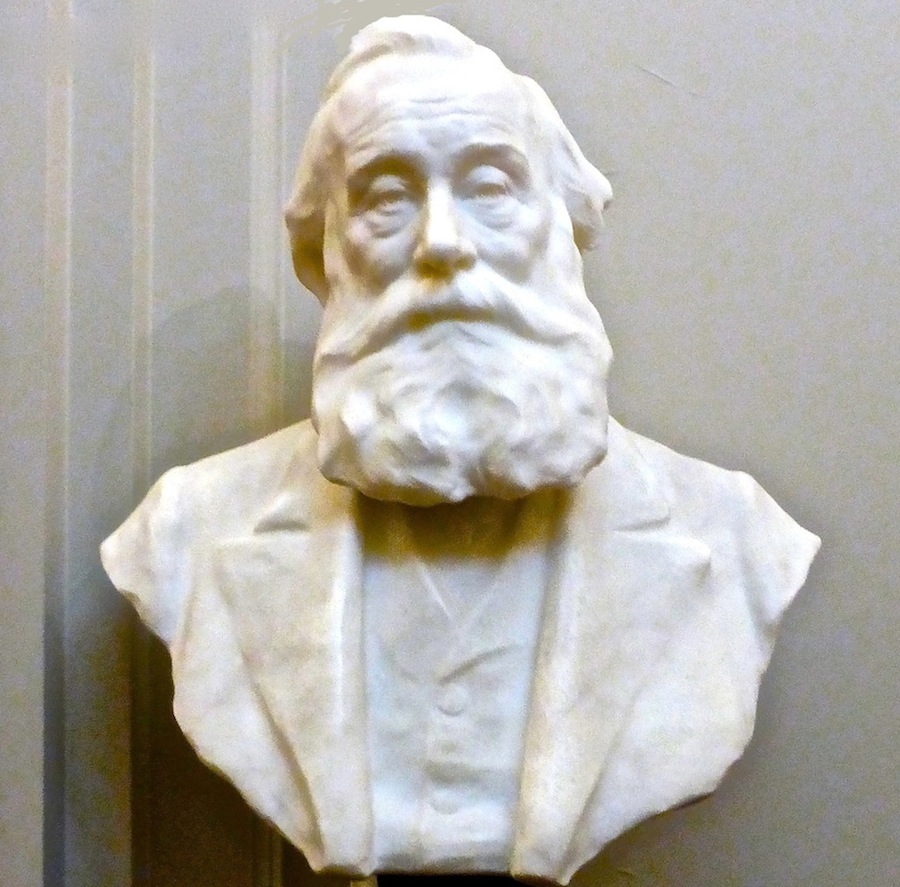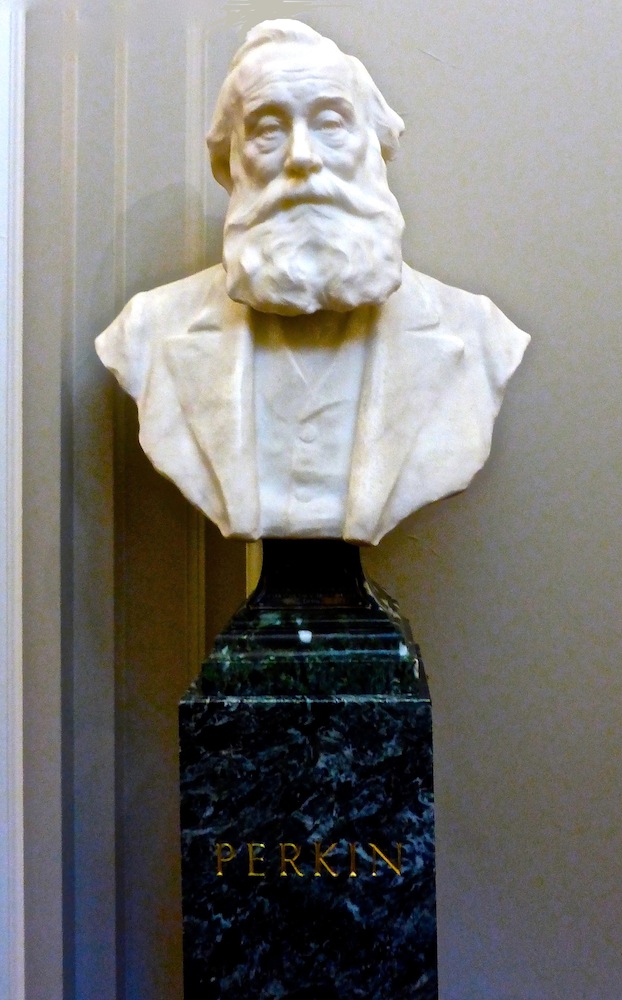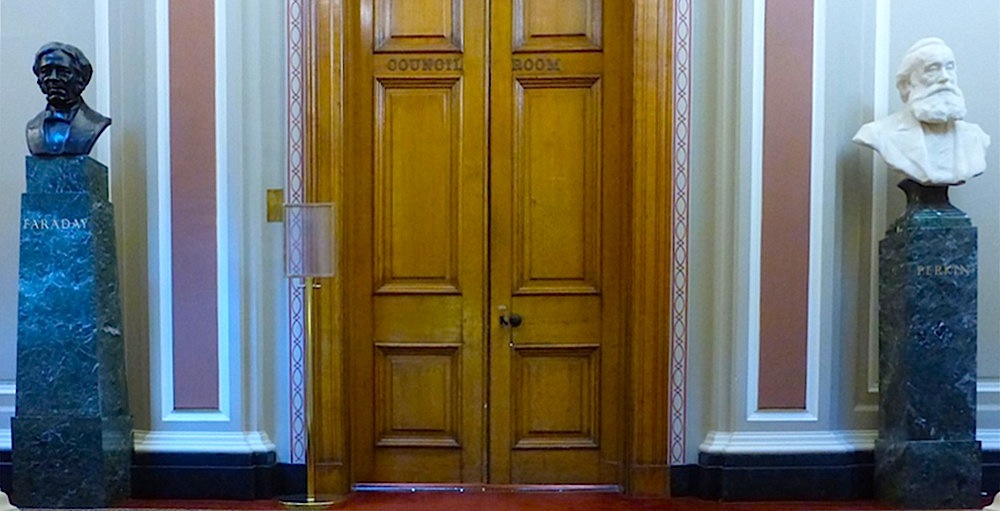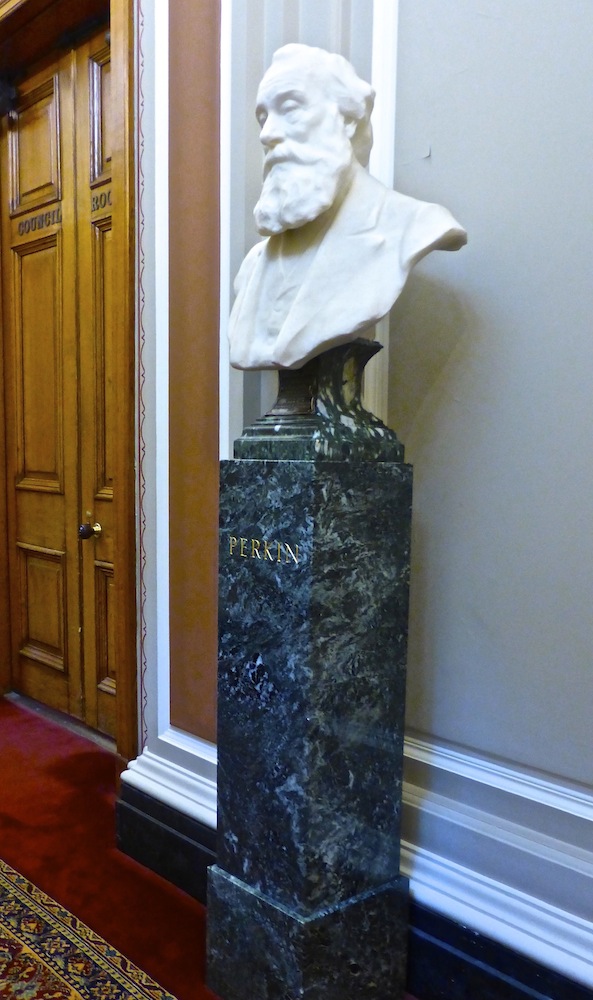

Left: Three-quarter view of Pomeroy's bust of Sir William Perkin. Right: Close-up of Sir William Perkin's bust, in white marble against a grey background.
Sir William Henry Perkin (1838-1907), by Frederick W. Pomeroy, outside the Council Chamber of the Royal Society of Chemistry. 1906. White marble. The society is one of the six learned societies around the courtyard of Burlington House, Piccadilly, just to the right of the Royal Academy of Arts. Perkin had an almost lifelong connection with the Royal Society. He enrolled in it at fifteen, soon after its inception, when lectures were being held in nearby Jermyn Street, and studied under its first director, the inspiring August Wilhelm von Hoffman (1818-1892). After Perkin's epoch-making discovery of the artificial colour mauve, "he began to contribute what was to prove an uninterrupted stream of papers to the Transactions of the Chemical Society [the society would merge with the Royal Society; the journal was for some years actually called 'Perkin Transactions']. In 1866 he was elected to a fellowship in the Royal Society" (Harrow 239).



Left to right: (a) Front view of the bust on its pedestal. (b) Busts of Michael Faraday and Perkin flank the Council Room doors in the Royal Society of Chemistry. (c) Three-quarter view from the right.
While still a fourteen-year-old schoolboy at the City of London School, Perkin would go to listen to Michael Faraday's Saturday afternoon talks at the Royal Institution in Albemarle Street (see Garfield 19). Long afterwards, when giving his talks on mauve before the Royal Society, Perkin was gratified to find Faraday himself in the audience (Garfield 80). Surely he would have been even more pleased to know that his and Faraday's busts would be placed on pedestals at the top of the gracious staircase of the Royal College, flanking the doors to the Council Room.
Related Material
- William Perkin and the Coal-Tar Colours
- Society of Antiquaries (one of the other learned societies around the Burlington House forecourt)
Photographs and text by Jacqueline Banerjee, 2014. These images may be used without prior permission for any scholarly or educational purpose as long as you (1) credit the photographer and (2) link your document to this URL or cite it in a print document. [Click on the images for larger pictures.]
Bibliography
"About the RSC." The Reaction (Royal Society of Chemistry site). Web. 15 May 2014.
Garfield, Simon. Mauve: How One Man Invented a Colour That Changed the World. London: Faber, 2000.
Harrow, Dr Benjamin. "William Henry Perkin.". The Scientific Monthly. Vol. 9 (1 Sept. 1919). Jstor Early Journal Content. Web. 15 May 2014.
Morrell, Jack. "William Henry Perkin (1860-1929)." Oxford Dictionary of National Biography. Online ed. 15 May 2014.
"Publishing: Journals, Books and Databases." Royal Society of Chemistry. Web. 15 May 2014.
Perkin, W. H. On the Aniline or Coal Tar Colours. (Cantor Lectures). London: Trounce (printers), 1869. Uploaded from the California Digital Library. Internet Archive. Web. 15 May 2014.
Travis, Anthony S. "Perkin, Sir William Henry (1838-1907)." Oxford Dictionary of National Biography. Online ed. 15 May 2014.
Last modified 15 May 2015